The Only Ainu Restaurant in Tokyo
Hidden among the bustling streets of central Tokyo, a dimly lit porch leads to a venue that feels a world away from the Korean barbecues and neon-lit karaokes that draw night-time crowds to the Ōkubo neighborhood. Through the door, which is often left open, is a corridor lined with photographs and a softly lit room. As it draws nearer, so too do the sounds of ancient chants sung to a hypnotic beat and the smell of homemade stew.
The small izakaya (an eatery-cum-bar) has only five tables and a kitchen at the far end. Among the wood and straw furnishings, artifacts are on display: a wooden string instrument decorated with sinuous carvings, an indigo robe featuring intricate patterns of interconnected lines and shapes, an old map of Hokkaido (Japan’s northernmost main island). Each of these objects is important to the Ainu, the Indigenous people of northern Japan and Russia’s Sakhalin and Kuril Islands, whose culture is celebrated here at izakaya Harukor.
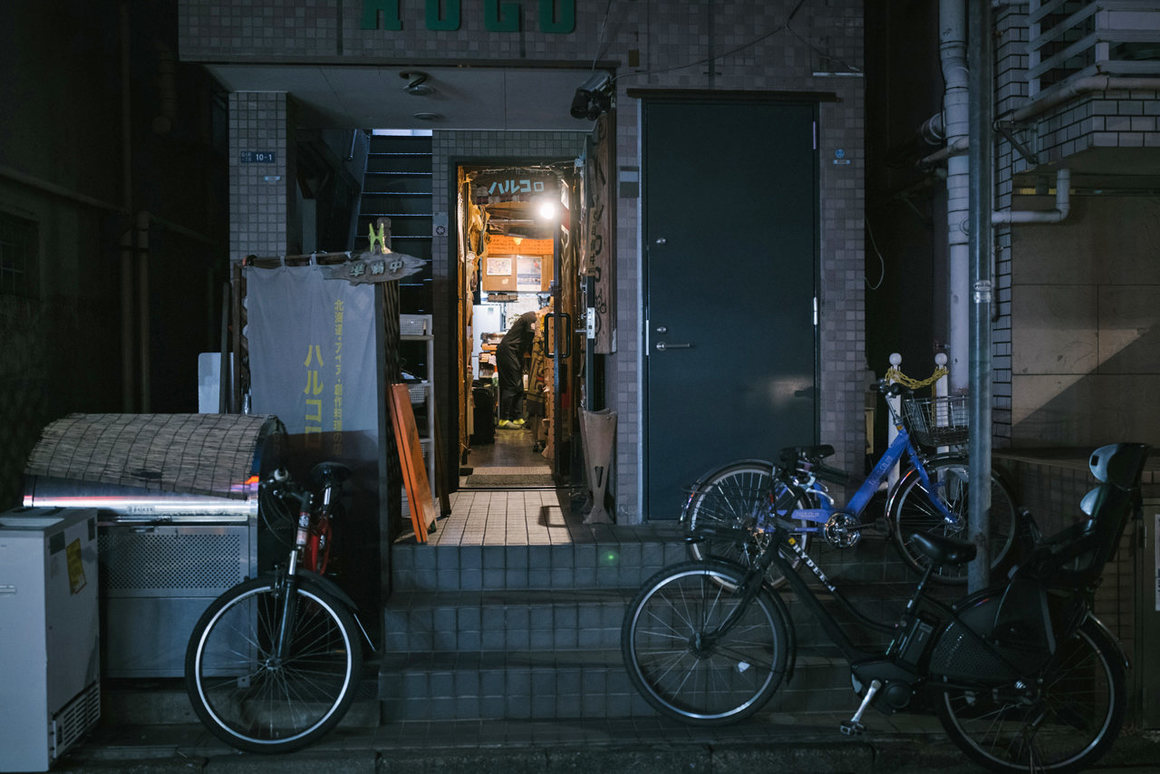
Out of 150,000 restaurants in Tokyo, Harukor is the only one serving dishes made by the Ainu, a minority group that has faced discrimination ever since, in the wake of centuries of trade, Japan invaded and annexed their native land of Hokkaido and fought with Russia over control of Sakhalin and the Kuril Islands—a part of whose Ainu populations were forcefully displaced to Hokkaido—in the second half of the 1800s.
Subjected to a policy of assimilation, Ainu people lost their traditional way of life and were forced to become Japanese citizens. This process of cultural erasure, however, wasn’t entirely successful—a fact on display at Harukor, where Ainu founder Teruyo Usa serves dishes such as rataskep, a mixture of stewed wild vegetables and beans mashed with pumpkin and animal fat, and sito, rich dumplings traditionally offered to Ainu gods, known as kamuy, during ceremonies.
At Harukor, Usa prepares ohaw, a soup that was once an Ainu staple made with seasonal ingredients, as a delicate broth imbued with wild vegetables and salmon. “It was a fixture when I was a child, but my parents never told me it was an Ainu dish,” she recalls. “Up to the age of 10, I lived in Hokkaido. I didn’t know anything about Ainu culture and had to conceal my identity because of the stigma.”
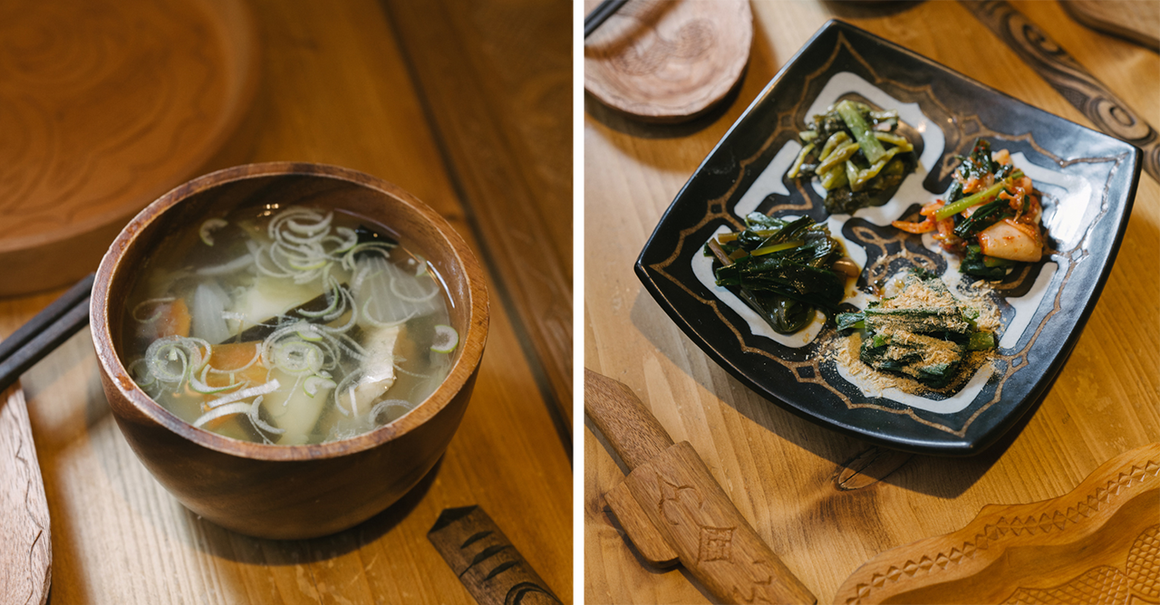
This lack of awareness of Ainu foods and heritage was commonplace. Usa’s grandmother, who was born on the largest of the southern Kuril Islands but forcibly relocated to Hokkaido, had to abandon traditional customs, such as women’s tattoos and burning a family member’s house after their death, as these were outlawed by Japanese rulers. She also attended a segregated school system in which she was educated in Japanese and not in Ainu, a language that was almost entirely wiped out as families gradually stopped teaching it to children under the pressure of colonization.
The Ainu traditionally consumed resources in accordance with an animist belief system based on reverence for divinities embodied in plants, animals, and other natural elements, and relied on hunting, gathering, fishing, and some limited forms of agriculture. Traditionally, men hunted game such as bear and deer, and fished salmon and trout. Women foraged wild vegetables and leeks, lilies, and ferns, and grew grains such as millet and wheat. Meat and fish were often smoked, dried, or boiled to make ohaw—unlike the Japanese, the Ainu didn’t eat raw fish—using simple seasonings such as salt, animal fat, or the edible kelp kombu.
But under the infamous “Hokkaido Former Aborigines Protection Act,” adopted in 1899 and repealed only in 1997, the Japanese government forced the Ainu to adopt rice, beans, potatoes, and livestock farming instead. Usa’s grandmother and following generations lost the connection to their land and ancient food systems.
“My grandmother grew up denying her culture in public and practicing it only in private,” says Usa.
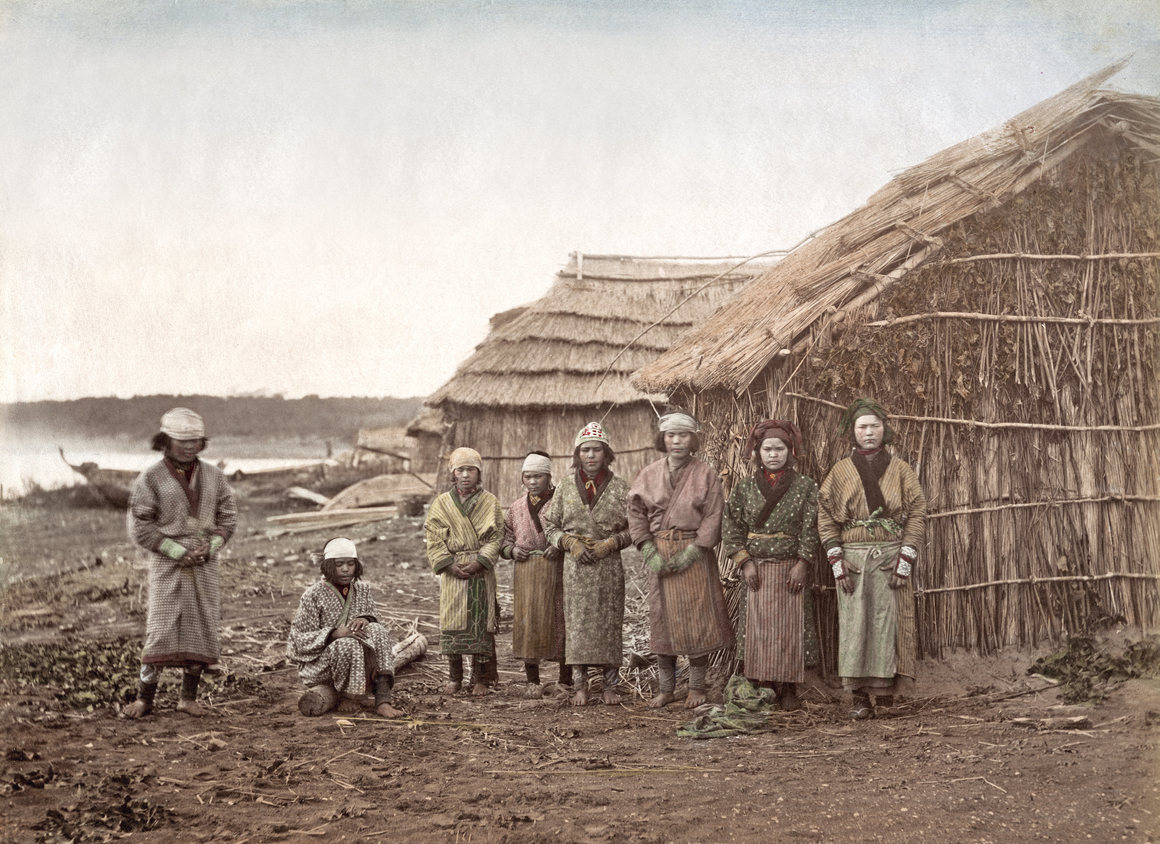
New ingredients entered the Ainu diet, including Japanese seasonings such as miso. Many elements of Native cooking disappeared, although others were assimilated into Japanese cuisine. The name for kombu, one of the main ingredients in the dashi broths that are the foundation of many Japanese preparations, for example, is thought to derive from the Ainu word konp.
To openly identify as Ainu isn’t a simple decision. Even though the Ainu were officially recognized as Japan’s Indigenous people by the government in 2019, and discrimination against them is illegal, this community continues to be the target of racism and hate speech. As recently as 2014, a Hokkaido politician publicly denied the Ainu’s existence, sparking a deluge of racist comments online and an anti-Ainu demonstration in Tokyo. As a result, Usa’s family was not unusual in hiding their identity.
Her grandmother, Usa says, “kept many painful details of her life from me up to three months before she passed away.” At the time, Usa also discovered that her grandmother spoke Ainu. “I would have wanted her to teach me, but she kept me in the dark because she feared I would reject our heritage if I knew what she’d been through.”
When the family moved to Tokyo, however, they didn’t have to hide any longer because “people simply didn’t know who the Ainu were.” Usa’s grandmother became more open about her identity and even joined an Ainu culture group. In 1994, when Usa was 18, the group, which her mother had also joined, opened the restaurant Rera Chise, or “wind house,” in Tokyo.
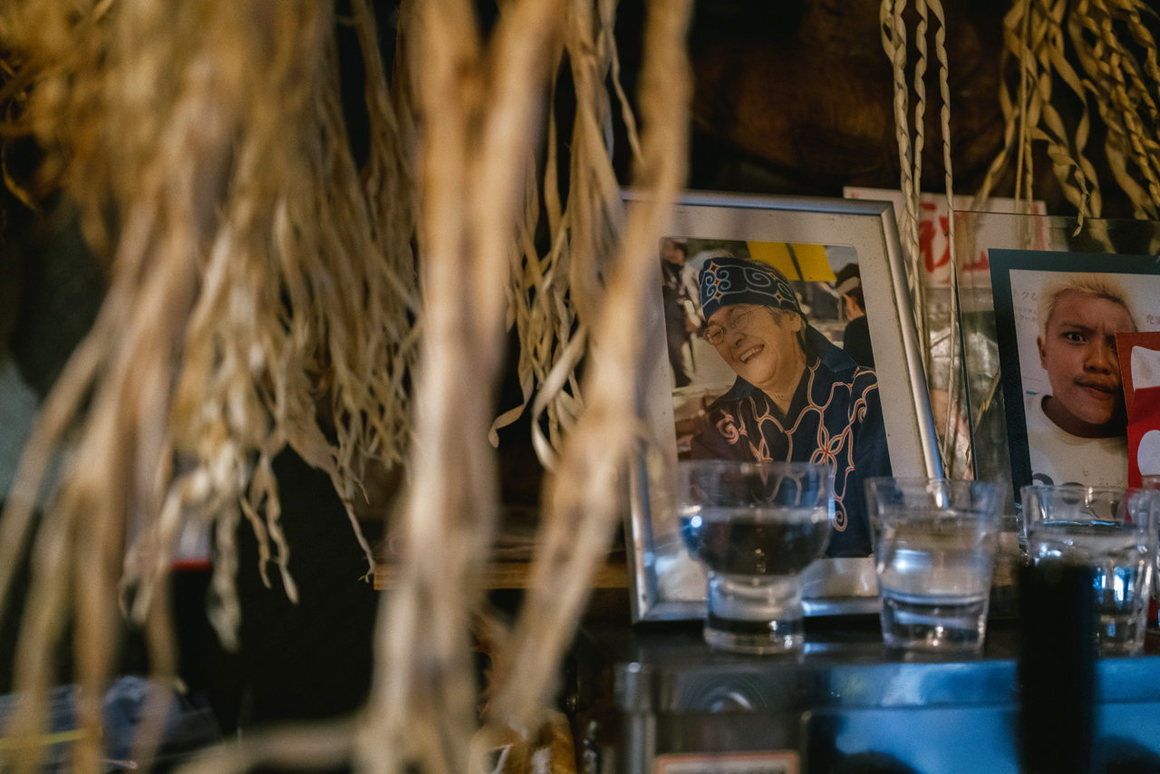
“They were looking for a place where they could meet, but didn’t receive any support from the local government,” Usa recalls. “So they decided to do it on their own.” She describes her time at Rera Chise, which remained open for 14 years, as “intense but great.” The restaurant unified the community, which felt empowered by sharing its foods with non-Ainu people.
When the restaurant closed, Usa and her mother decided to open a new one to continue promoting Ainu culture through food. “We didn’t want to disappoint all the people who had given us their support and affection,” says Usa. Her grandmother also died around that time, and Usa believes her mother wanted to more deeply connect to their roots. They found the location in Ōkubo and chose the name Harukor, or “to carry grain.” But just a month after opening, Usa’s mother passed away suddenly.
The void she left behind wasn’t only emotional: a wealth of culinary knowledge was lost with her. “Fortunately, though, my husband had learned to cook Ainu by observing her in the kitchen,” says Usa. Almost a decade later, she’s still running the business (while also raising a daughter) and remains devoted to making customers feel at home while her husband, who isn’t Ainu, is busy in the kitchen.
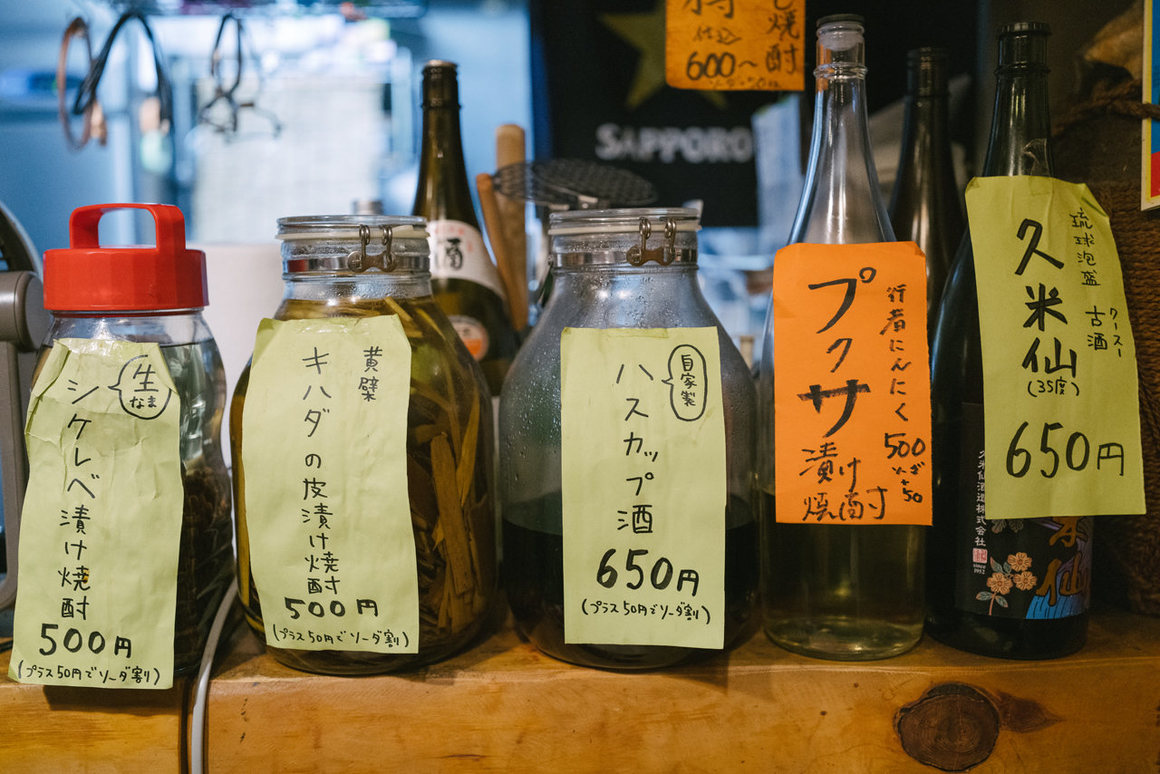
Ingredients served at Harukor such as venison, salmon, and root and wild vegetables are sourced from Hokkaido. Accompanying the menu is an explanation of Indigenous foods, including turep or wild lily, one of the most important vegetables in Ainu cooking, which is made into a crispy and light tempura, and pukusa or kitopiro, a wild onion served boiled, marinated, or with dumplings, and that is making a comeback after its consumption dwindled as a result of the Japanization of Native cuisine. Harukor also offers Japanese izakaya classics such as edamame and fried chicken, as well as typical Hokkaido fare such as grilled hokke, a type of mackerel, and a mutton barbecue known as Genghis Khan.
“The exchange that takes place at the table is vital to preserve and promote our culture,” Usa explains. “Instead of going to a museum, if you want to learn about the Ainu, the best thing to do is sit around a table and talk.” She encourages customers to ask her questions, which are often prompted by the unusual dishes, posters of Ainu cultural events, and Indigenous artifacts such as the tonkori, a long and slender string instrument that Usa sometimes plays at the end of service when the atmosphere feels right.
This rare venue, in which people can freely discuss Native ancestry in Japan, attracts a heterogeneous crowd: from Ainu descendants, to long-time supporters of the community, to those simply curious about Indigenous food. Fans of Golden Kamuy—a manga and anime series with many Ainu characters that is set during the period of Japanese colonization of Hokkaido—figure prominently in the latter group.
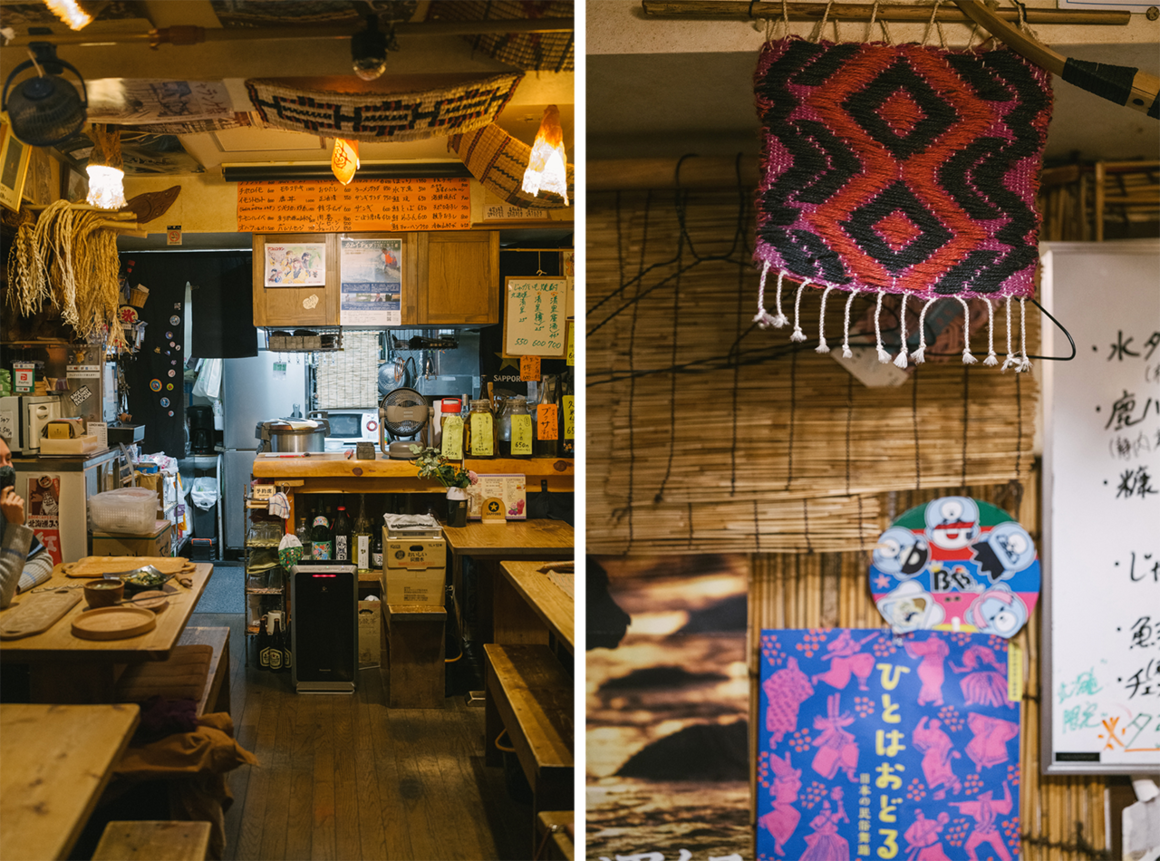
The release of Golden Kamuy’s third season this fall is likely to draw new customers, and especially young people, who are keen to try Native cuisine while exclaiming “hinna, hinna,” an Ainu term expressing gratitude to the gods that has become something of a catchword among fans of the series. These customers are a welcome influx considering the pandemic’s impact on restaurants, although business is picking up again thanks to Japan’s relative success in containing the spread of Covid-19.
Harukor is not alone in serving and sharing Ainu food. Kerapirka, in the Hokkaido capital of Sapporo, specializes in Ainu-Italian fusion. Poronno, a café near Lake Akan in eastern Hokkaido, has been serving Ainu cuisine for 40 years. A recent cookbook, The Spirit of Huci: Four Seasons of an Ainu Woman, shares the cuisine and culture, and the Ainu Women’s Association Menoko Mosmos and Slow Food have organized Indigenous food festivals.
This momentum around revitalizing Ainu cuisine is complemented by government support for traditional crafts and musical performances carried out in the recently opened Upopoy Museum, the first national museum dedicated to Ainu culture, as well as a growing number of Ainu language classes. Despite this visibility, though, the Ainu remain dispossessed of ancestral lands and face unequal access to economic opportunities and political participation.
“When I was in school, what we were taught about the Ainu was limited to a page in our textbook,” Usa says. “Nowadays, much more attention is being paid to our culture. However, it’s far from enough: Some people still ask whether the Ainu actually exist. What I want is for society to become aware of what the Japanese did to us.” While Ainu people still have little voice in mainstream discourse, there’s a small izakaya tucked away in central Tokyo where honest conversations are held over dishes whose flavors tell the story of a different, multicultural Japan.





